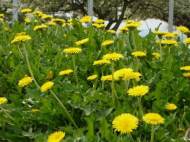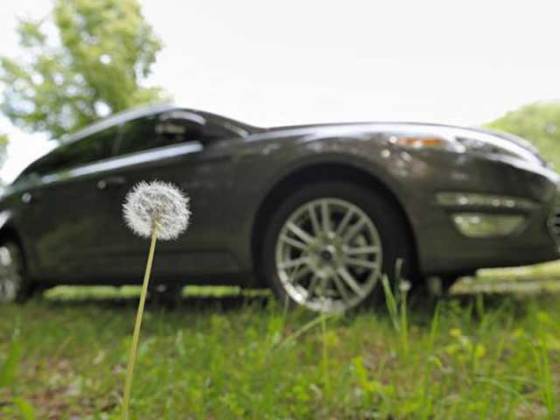Dandelion roots could be used as a sustainable natural rubber resource
 The Program of Excellence in Natural Rubber Alternatives (PENRA) was created to focus on research and commercialization of a viable natural rubber alternative, in order to counter the natural rubber supply shortage. Continuing the research, scientists at Ford and the Ohio State University see a species of dandelion as a new sustainable resource for rubber.
The Program of Excellence in Natural Rubber Alternatives (PENRA) was created to focus on research and commercialization of a viable natural rubber alternative, in order to counter the natural rubber supply shortage. Continuing the research, scientists at Ford and the Ohio State University see a species of dandelion as a new sustainable resource for rubber.
The PENRA, housed at The Ohio State University’s Ohio Agricultural Research and Development Center (OARDC), includes Ohio State, the University of Akron, and Oregon State University; and Cooper Tire, Bridgestone Americas, and Veyance Technologies (formerly Goodyear Engineered Products), each of which produces tires and industrial rubber products in Ohio.
The “Russian dandelion”, Taraxacum kok-saghyz (TKS), was used at OARDC’s Wooster campus in order to produce high-quality natural rubber in its fleshy taproot. A milky-white substance that seeps from the roots of this species of dandelion is used to produce the rubber. An important additional product of TKS cultivation is ethanol.
Its performance mirrors the natural rubber produced from Hevea brasiliensis (the Brazilian rubber tree). Natural rubber produced from Hevea is the only commodity volume source for tires and rubber industrial products in the world, but it usually grows in warmer areas.
Beginning with seeds brought from native TKS-growing regions, OARDC and OSU Extension are leading the domestication and rubber-yield enhancement of TKS plants, selecting promising individuals from wild-collected seed and continually raising the performance characteristics while improving the growing and harvesting techniques.
“We’re always looking for new sustainable materials to use in our vehicles that have a smaller carbon footprint to produce and can be grown locally”, said Angela Harris, Ford research engineer. “Synthetic rubber is not a sustainable resource, so we want to minimize its use in our vehicles when possible. Dandelions have the potential to serve as a great natural alternative to synthetic rubber in our products.”
Ford could potentially use the substance as a plastics modifier, to help improve the impact strength of plastics. The material might then be used in places such as cupholders, floor mats and interior trim. Before the dandelion-derived rubber can be put to use, Ford researchers will assess the initial quality of the material to evaluate how it will perform in a variety of plastics that are used in vehicles and to ensure it meets durability standards.
Besides the dandelion, the team also is looking into the use of guayule (a southwestern U.S. shrub) as a natural rubber, which is provided by OARDC and can also be grown domestically.
Over the past several years Ford has concentrated on increasing the use of nonmetal recycled and bio-based materials whenever possible, provided these materials are environmentally favorable in the specific application. Examples include soy foam seat cushions, wheat straw-filled plastic, recycled resins for underbody systems, recycled yarns on seat covers and natural-fiber plastic for interior components.










Good adoption of BIOMIMICKING!
Dr.A.Jagadeesh Nellore(AP),India
Hmm Interesting…